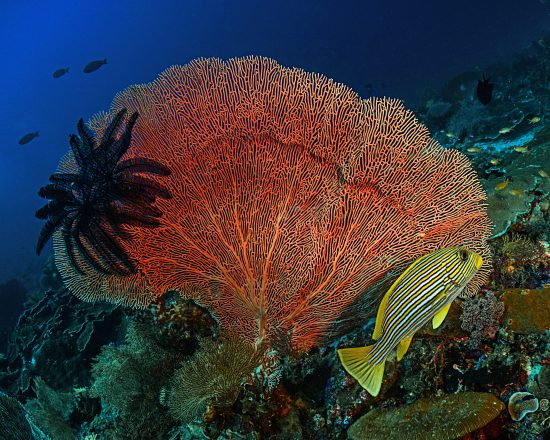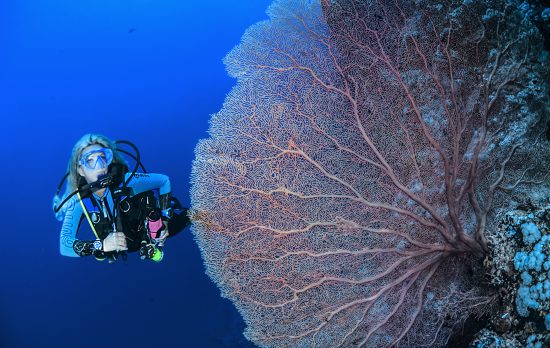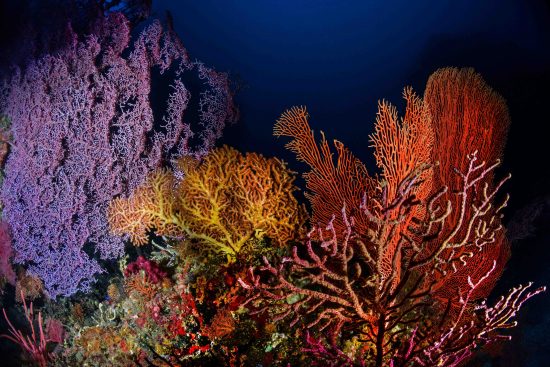




Gorgonias are my favourite soft corals. In my opinion, they are magical; they look like mini trees or bonsais under the water. Even though they look like plants, they are indeed invertebrate marine animals. There are more than 100 genera and 23 families in this genus, found all over the world at different depths, some very deep. Several Gorgonia species are found on America's east and west coasts. Some can also be found in the Caribbean and the Mediterranean Sea.
All corals in the gorgonian family have an axial skeleton-like internal structure called a sclerax that gives them support and space for polyps to develop. The sclerax is made up of a protein called gorgonine, a horny substance surrounded by mesoglea, and that is where their name comes from. Gorgonine is strong and flexible, giving them the ability to resist currents. Their spicules (needle-like parts) made of solid calcium carbonate must be less than 0.3mm long and covered with white flower-looking dots, polyps forming the sea fans. Their colours depend on the different chemical pigments produced in the spicules. The polyps are arranged on a single level on the sclerax and form arborescent colonies. Even though the branches are in one plane, they are connected by loads of cross branches, creating an amazing mesh like structure.
Gorgonian corals reproduce in several ways. They can reproduce asexually by cloning or by fragmentation with external fertilization. Their larvae usually spend several days as plankton before settling on a hard surface and forming a colony.
Some species of gorgonians from dense forest-like aggregations, host amazing biodiversity and create amazing habitats. They provide food and shelter to many marine species. They are also a good indicator of the reef's health. The deeper they live, the more chance they have for a stress-free life away from destruction by storms and UV light and rising surface water temperatures. Even though they have a great power of regeneration, they are easily damaged, so care is needed when diving around them.
Written by Bogna Griffin, Marine Biologist
Photos by Janez Kranjc and Ivana OK
 Ivana and Janez
Ivana and Janez 28th July 2023
28th July 2023